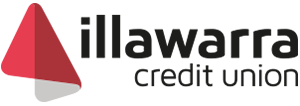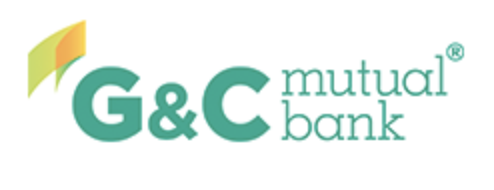
Saving money is one of those things that seems straightforward in theory but can be challenging in practice. It is so difficult in fact that one in six, or around 3.4 million, Australians only have less than $1,000 saved, according to the InfoChoice State of Aussies' Savings Survey 2024. Nearly one-third also have less than $5,000 saved.
At that savings level, suddenly losing your primary source of income could easily deplete your cash reserve within a month. More than a quarter of Aussies don't have one month's income saved, and more than half don't have enough for an optimal emergency savings buffer. So if you're paying a mortgage or rent, it could take even less time to deplete your savings.
Sure - you could substantially cut back on spending on essentials, as 43.4% of adult Aussies have done, and live off 2-minute noodles, to grow your savings. But there are more ways you can do to save money without sacrificing too much on the necessary things to live and enjoy life.
Some of the following tips, while simple and easy enough, aren't the most exciting. So if you're serious about saving money, you'll need to roll your sleeves up.
1. Record all your expenses
This is why most savings goals and budgeting plans fail - neglecting to track every dollar you spend. If you have no idea where your money goes, how can you effectively budget it, let alone find the dollars to save?
Start by listing down all your expenses. This includes everything from major bills to small purchases (e.g. those daily coffee runs). Use a notebook, a spreadsheet, or a budgeting app to keep an accurate record. Do this for a month to get a complete picture of your expenditures and spending habits, and identify areas where you can cut back.
It can also be helpful to physically print out your bank statements over the past few months to get a good eagle-eyed view of everything going in and coming out. You might be surprised at what you're spending, especially as it's so easy nowadays to merely tap your card or phone and not think twice about it.
By keeping track of where your money is going, you can know not only how you're spending, but also be able to pick up on unauthorised transactions or suspicious activities (e.g. identity theft) which could be happening without your knowledge.
2. Create a budget
Once you know where your cash goes, you can now create a realistic budget. There are different ways to approach this.
-
Allocate funds with the 50-30-20 framework, where 50% goes to essentials (rent/mortgage, utilities, food), 30% to 'wants' (dining out, entertainment, hobbies), and 20% to savings. Or flip the last two around if you're on a mission.
-
Use the envelope system, where you divvy up your cash into labelled envelopes with different categories (groceries, utilities, housing). Once an envelope is empty, you cannot spend more in that category.
-
Employ the bucket method where, instead of cash in envelopes, you set up automated bank transfers into different 'bucket accounts' each pay cycle. This was popularised by the Barefoot Investor.
There are a lot more ways to do this, but the best method is the one that works for you. According to our survey. more than a quarter of Aussies don't budget at all, while the single most popular method for those who do is using a spreadsheet.
3. Separate your savings and spending accounts
Open separate accounts for spending and saving. This helps prevent you from dipping into your savings for everyday expenses. Put your spending money in a transaction account, which typically comes with a debit card for convenient ATM or EFTPOS access. And keep your stash in a savings account, ideally without a physical card so you won't be tempted to touch it.
4. Use high-interest savings accounts
Instead of keeping your savings in non-interest earning transaction accounts - which 8.2% of Australians actually do, per our survey - park your money in high-interest savings accounts to turbocharge its growth over time.
Many banks in Australia, including the Big Four and smaller players, offer new account holders with introductory interest rates, which gives your savings a boost during the first few months of opening the account.
Additionally, some banks also provide bonus rates on top of the base rate, though you will likely have to jump through a few hurdles (e.g. depositing a minimum amount each month) to get those. That said, you'll want to make sure you have an account with conditions you can realistically achieve, even if it means accepting a lower interest rate.
If you can't be bothered saving in a bank out of fear of losing your money from hackers or bankruptcy, note that Australian banks are among the world's safest and most stable. They are mandated to maintain enough capital reserves to absorb unexpected shocks, and your cash deposits up to $250,000 are government guaranteed.
5. Open a term deposit account
Consider opening a term deposit account, which gives you guaranteed returns, if you have funds you can afford to lock away for a fixed period. Meaning, you can't touch it before the term ends lest you want to pay fees and lose a significant chunk of your interest earnings.
Term deposits are available in 30-day to 60-month fixed periods, with interest paid at varying frequencies (monthly, semi-annually, annually, at maturity). Our database indicates the highest average rates tend to be for 6- or 12-month terms, with interest paid at maturity.
If you expect to be dipping into your savings in a few months or have a short-term savings goal, you may opt for a short-term period. If you have a longer-term goal, a longer one could yield better returns. A good rule of thumb though is to not put emergency funds or any cash you need immediate access to in a term deposit.
6. Refinance your home loan
If you have a mortgage, consider refinancing to a loan with a lower interest rate. Even a slight reduction in interest rate, like 1% less on a $500,000 mortgage, could save you thousands of dollars in interest over the life of the loan.
If you were previously paying 6.20% p.a. and refinanced to 5.50% p.a. on a $500,000 30-year home loan you would save just over $223 a month.
However, consider the costs involved before you refinance, including the new home loan's fees. Typically though, the potential savings from a lower interest mortgage are far greater than the hundred dollars worth of exit and establishment fees, among others.
Be sure to compare different lenders and products before switching to get the best deal, and use a refinancing calculator to check whether you're better over the long run.
7. Set up an offset account
Another way to save if you have a home loan is by setting up and putting money in an offset account. In case you didn't know, the money you keep in an offset account is used to offset the principal amount of your loan when calculating interest. That means, if you have a $500,000 mortgage and $20,000 in the linked offset account, you'll only pay interest on $480,000.
In most cases, parking funds in an offset account rather than a savings account would be the better option for saving money, for two reasons:
-
The rate on your home loan is likely higher than what you can achieve on a savings account.
-
Savings account interest is classed as taxable income.
While you won't see a balance appreciation and interest payments roll in every month, in this case, a penny saved could be better than a penny earned.
Again, consider the costs of maintaining an offset account. Aside from potential fees, home loans with this feature typically command higher interest rates. So, you'll want to make sure your balance is high enough and your interest saved outweighs these costs.
8. Change your repayment frequency
Switching from monthly to fortnightly mortgage repayments not only helps you pay off your home loan early, it can also save you money. This extra repayment (12 if monthly vs 13 if every fortnight) reduces your principal balance faster, meaning less interest is charged over time. Just make sure to check with your lender if changing payment frequency is allowed and if there are potential fees involved.
9. Get on top of your credit card expenses
Some would say you should cut your card to save. But we argue to only do that if you don't know how to use that plastic responsibly. Credit cards can be a useful financial tool with potential rewards and other perks when used right.
That means, don't treat your credit card like extra cash, use it only for purchases you can afford to pay off so you can clear your balance each month to avoid accruing interest. This way, you can potentially save money from the cashback or rewards points your credit card may offer without losing cash on late fees and interest charges.
If you find you are unable to pay off your statement in full, you could consider a balance transfer. This rolls your credit card balance into a new product. Keep an eye out for offers that offer 0% balance transfers so you can save money on interest. Keep in mind though that there is typically a fee to do a balance transfer, and you will likely need to pay off the whole balance within a set time frame - anywhere from 12 to 36 months.
10. Pay your loans and bills on time
Late fees and interest charges can add up quickly. Set up reminders for all your loans and bills to make sure you pay them on time. Better yet, automate payments so you don't have to remember due dates while ensuring bills are paid. This is especially useful for recurring obligations like mortgages, car loans, utilities, and credit card bills.
11. Compare utilities - energy, gas, insurance, phone and internet
Loyalty to a service provider rarely pays off. Always compare different energy providers to find a better deal on your energy plan, and potentially save hundreds of dollars. You can take advantage of special offers or discounts for new customers, making switching providers even more attractive.
The government's Energy Made Easy website lets you easily compare your power bill to the cheapest offers in the market. Also, look at your phone and internet plans; chances are you aren't using all the data, so consider switching to a lower-data and cheaper plan. For the internet, you might be paying for speeds you don't need. If all you're doing is streaming and browsing, chances are you could get away with a slower plan.
However, before making any changes, review the contract terms to ensure the savings from the new plan outweigh any potential exit fees from your current plan.
12. Review your subscriptions
Subscription services can quietly drain your finances if left unchecked. So regularly review everything you've signed up for - from streaming services and cloud storage to meal kits and gym memberships - and cancel those you no longer need or use.
For streaming, you could consider sticking to one per month, watching all the shows and movies you want in that month, then cancelling and going to another streaming service.
You can also look for bundling options that usually come with a lower combined rate, like an internet plan that comes with a subscription to streaming service platforms, to potentially save more.
13. Be a savvy shopper
There are a few things you can do at the checkout or in your online shopping cart to maximise money saved.

Purchase produce at night - it might be cheaper!
Buy generic brands
Sure, you like branded products because they are familiar. But don't dismiss generic brands. Also known as store brands or private labels, they are often produced by the same manufacturers as their name-brand counterparts but are sold at a lower price.
Switch some of your groceries and household supplies to generic brands. Over time, the savings on these everyday items can potentially add up to a substantial amount.
Utilise cashback and rewards programs
Maximise cashback apps and sign up for loyalty rewards programs to earn points or get your money back whenever you shop. Many banking apps have in-built cashback offers and rewards points multipliers. While it's not a good idea to alter your habits just to accommodate these, see if these can enhance your shopping.
Shop during sales
Always seek discounts and purchase goods when prices are down. For example, fresh produce is often priced lower late at night, your choices might not be as varied though, so pick and choose your battle. Further, major sale events like Boxing Day, Black Friday and Cyber Monday can be an ideal time to purchase expensive gadgets or appliances, as well as gifts for family and friends.
14. Manage transport expenses
Instead of taking Uber or driving your gas guzzler every day, consider taking the bus or train. It might take you longer to arrive at your destination, but you'll be closer to your savings goals. You could also consider it a healthy habit as you are saving on greenhouse gases, and also likely having to walk to your stop.
If you're driving, be aware of fuel price cycles, such as through the ACCC website, or through a petrol price app, and buy at the bottom of the cycle. The difference between the top and the bottom could be more than 40c a litre.
15. Cook at home
Ordering takeaways and buying lunch every day is an expensive way of feeding yourself. To save money, it's best to cook your meals at home. If you're busy, meal prep and bulk cook a week-long worth of meals in one day, say on a Saturday, so you can simply grab and heat the rest of the week.
16. Participate in free activities
You don't always have to spend to have fun - check your local council's website for information on free events like outdoor concerts, movie nights, or community festivals. Take advantage of the free facilities available in your neighbourhood. Go to your local park for a picnic or a museum to enjoy art exhibits.
Instead of an expensive gym membership, you could look at park runs or run clubs in your area.
17. Be accountable
Hold yourself accountable to your savings goal. You can ask a friend or a family member to be your accountability partner to keep you in check - or get on a savings kick with your partner. But at the end of the day, it's up to you to stick to your plan and focus on your objectives.
That said, don't be too hard on yourself. Life happens, and if you go over budget or fail to set aside money for your savings in one month, you can always pull yourself up in the next. After all, as our survey suggests, 80.8% of respondents expect their savings balance to increase in the next month.
A previous version of this article written by Jonathan Jackson
Header photo by Freepik; in-text photo by Jack Sparrow on Pexels










